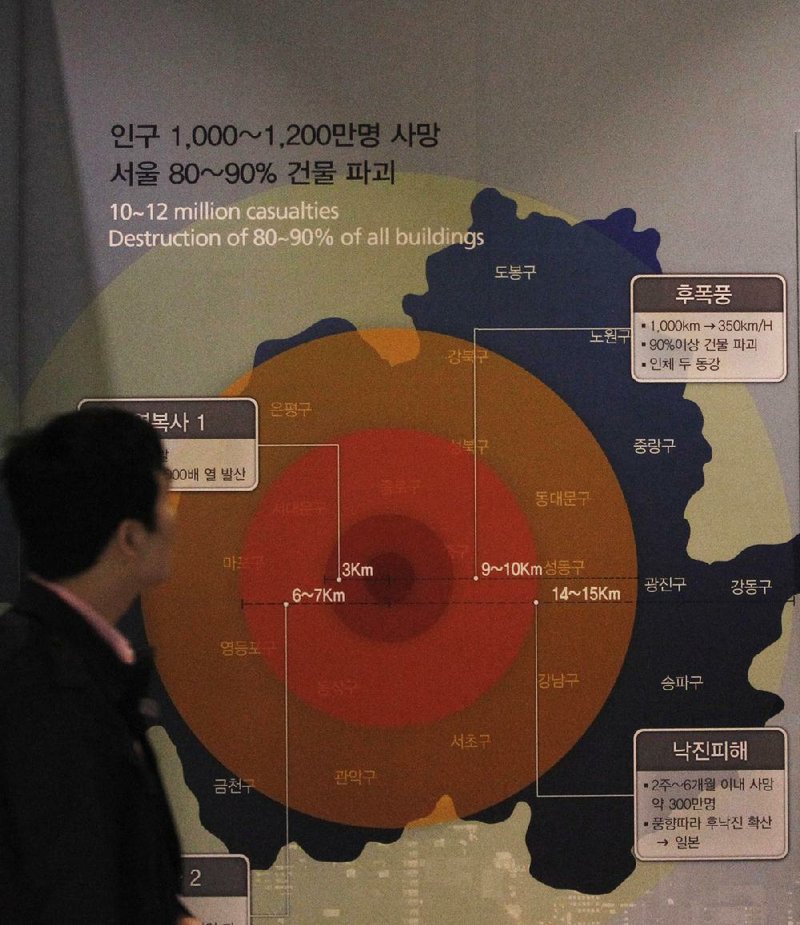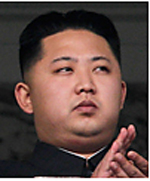SEOUL, South Korea - North Korea said Tuesday that it will restart its long-shuttered plutonium reactor and increase production of nuclear weapons material, in what outsiders see as its latest attempt to extract U.S. concessions by raising fear of war.
A spokesman for the North’s General Department of Atomic Energy said scientists will quickly begin “ readjusting and restarting” the facilities at its main Yongbyon nuclear complex, including the plutonium reactor and a uranium enrichment plant. Both could produce fuel for nuclear weapons.
The reactor began operations in 1986 but was shut down as part of international nuclear disarmament talks in 2007 that have since stalled. North Korea said work to restart the facilities would begin “without delay.” Experts estimate that it could take from three months to a yearto reactivate the reactor.
Today, North Korea barred South Korean workers from entering a jointly run factory park just over the heavily armed border in the North, officials in Seoul said.
The Kaesong factory park is the last remaining symbol of detente between the rivals.
Seoul’s Unification Ministry spokesman Kim Hyungsuk said Pyongyang is allowing South Koreans to return home from Kaesong, but that about 480 South Koreanswho had planned to travel to the park today were being refused entry.
North Korean authorities cited recent political circumstances on the Korean Peninsula when they delivered their decision to block South Korean workers from entering Kaesong, Kim said without elaborating.
The nuclear vows and a rising tide of threats in recent weeks are seen as efforts by the North to force disarmament-for-aid talks with Washington and to increase domestic loyalty to young North Korean leader Kim Jong Un by portraying him as a powerful military commander.
Tuesday’s announcement underscores concerns about North Korea’s timetable for building a nuclear-tipped missile that can reach the United States, although it is still believed to be years away from developing that technology.
The U.S. called for North Korea to abandon its nuclear ambitions, saying it would be “extremely alarming” if Pyongyang follows through on a vow to restart its plutonium reactor.
White House spokesman Jay Carney said the U.S. is taking steps to ensure that it has the capacity to defend itself and its allies, and that President Barack Obama is being updated regularly. “The entire national security team is focused on it,” Carney said.
But Carney noted that a string of threats from North Korea toward the U.S. and South Korea so far have not been backed up by action, calling the threats part of a counterproductive pattern. He called on Russia and China, two countries that he said have influence on North Korea, to use that influence to persuade the North to change course.
China, North Korea’s onlymajor economic and diplomatic supporter, expressed unusual disappointment with its ally. “We noticed North Korea’s statement, which we think is regrettable,” Chinese Foreign Ministry spokesman Hong Lei said. South Korea also called it “highly regrettable.”
Yukiya Amano, chief of the International Atomic Energy Agency, said the North’s decision “is another step which is deeply troubling for us and the world.”
U.N. Secretary-General Ban Ki-moon said Tuesday that North Korea appears to be “on a collision course with the international community.” Speaking in Andorra, the former South Korean foreign minister said the crisis has gone too far and that international negotiations are urgently needed.
U.S. Secretary of State John Kerry called North Korea’s recent rhetoric “provocative, dangerous and reckless.” He also vowed that the United States would defend itself and its allies South Korea and Japan from North Korea.
Hwang Jihwan, a North Korea expert at the University of Seoul, said the North “is keeping tension and crisis alive to raise stakes ahead of possible future talks with the United States.”
“North Korea is asking the world, ‘What are you going to do about this?’” he said.
North Korea used the perceived threats from the United States, like its joint military drills with South Korea, to justify its nuclear weapons arsenal.
At the same time, it “is continuing to expand its nuclear program and raising the fear of proliferation to force Washington to manage and engage it,” said Cheong Seong-chang, an analyst at Sejong Institute.
The unidentified North Korean atomic spokesman said the initiative is meant to resolve the country’s acute electricity shortage but is also for “bolstering up the nuclear armed force both in quality and quantity,” according to a statement carried by the official Korean Central News Agency.
The statement suggests that the North will do more to produce highly enriched uranium. The technology needed to make highly enriched uranium bombs is much easier to hide than are huge plutonium facilities. North Korea previously insisted that its uranium enrichment was for producing electricity - meaning low enriched uranium.
The North’s plutonium reactor produces spent fuel rods laced with plutonium and is the core of Yongbyon. It was disabled under a 2007 deal made at now-dormant aid-for-disarmament negotiations involving the North, the U.S., South Korea, Japan, China and Russia.
In 2008, North Korea destroyed the cooling tower at Yongbyon in a show of commitment, but the deal later stalled after the North balked at allowing intensive international fact-checking of its past nuclear activities. North Korea pulled out of the talks after international condemnation of its long-range rocket launch in April 2009.
The North’s new party line removed any lingering “ambiguity” over what North Korea might try to do with its nuclear weapons, said a senior South Korean government official, who briefed a group of foreign reporters on President Park Geun-hye’s policy on North Korea on condition that he remain unnamed.
“We now know their real intention,” he said. “The picture is clear. What we will do is the combined will of the international community.” He added that South Korea, the United States and their allies must employ “all means” of pressure on North Korea, including not only economic sanctions but also investigations into the North’s human-rights abuses. “They are depending on nuclear weapons for their survival, but we must persuade them that there is an alternative and brinkmanship doesn’t work.”
In February, North Korea conducted its third nuclear test, prompting a new round of U.N. sanctions that have infuriated its leaders. It has since declared that the armistice ending the Korean War in 1953 is void, has shut down key military phone and fax hot lines with Seoul, has threatened to launch nuclear and rocket strikes on the U.S. mainland and its allies, and has declared at a high-level government assembly that making nuclear arms and developing a stronger economy are the nation’s top priorities.
There had long been claims by the U.S. and others that North Korea was also pursuing a secret uranium program. In 2010, the North unveiled to visiting Americans a uranium-enrichment program at Yongbyon.
Scientist and nuclear expert Siegfried Hecker, one of the Americans on the 2010 visit to Yongbyon, has estimated that North Korea has 53-93 pounds of plutonium - enough for perhaps four to eight rudimentary bombs similar to the plutonium weapon used on Nagasaki in World War II.
North Korea is rich in uranium ores. Unlike the plutonium program, which included a large and easily spotted nuclear reactor, an enrichment plant composed of 1,000 centrifuges occupies a roughly 700-square-yard space, small enough to be hidden in one of the estimated 8,000 tunnels that North Korea has dug for military purposes across its mountainous terrain, South Korean military officials said. Information for this article was contributed by Foster Klug, Hyung-Jin Kim, Sam Kim, Jean H. Lee, John Heilprin, George Jahn and Zhao Liang of The Associated Press; and by Choe Sang-hun, Mark Landler and Thom Shanker of The New York Times.
Front Section, Pages 1 on 04/03/2013


